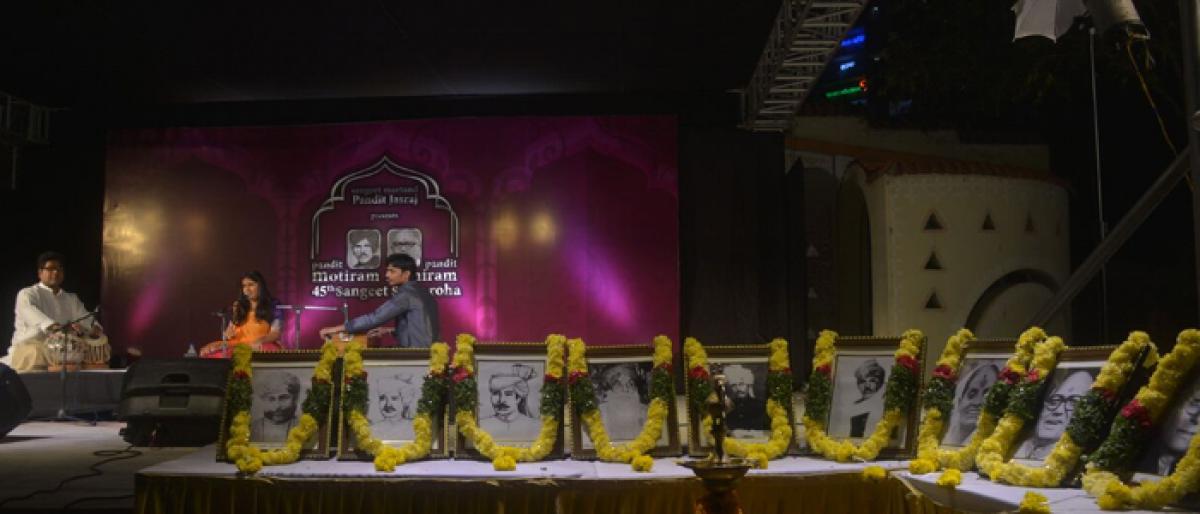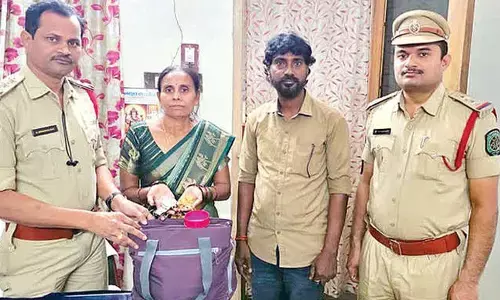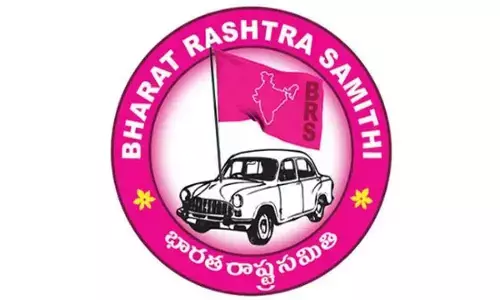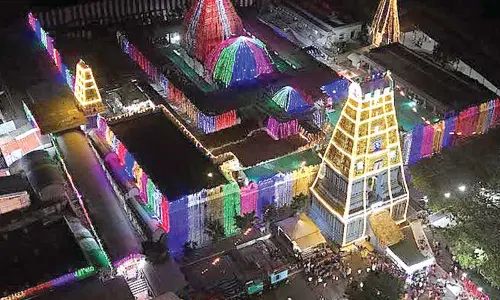An ode to music & a city

It was a breezy winter evening. There was nip in the air, and people were arriving in droves equipped with shawls, sweaters and mufflers thrown over gorgeous Pochampally Ikat and handloom sarees and dresses and men in their linen and silk kurtas; the youngsters looked more casual yet were evidently conscious of attending an important occasion – some even came with their tiffins packed with home-co
It was a breezy winter evening. There was nip in the air, and people were arriving in droves equipped with shawls, sweaters and mufflers thrown over gorgeous Pochampally Ikat and handloom sarees and dresses and men in their linen and silk kurtas; the youngsters looked more casual yet were evidently conscious of attending an important occasion – some even came with their tiffins packed with home-cooked food. They knew this was going to be a long night.
The programme did not begin on time like most in Hyderabad, but no one seemed to care. It was a happy mood, and it seemed like many knew many others, and there was hugging, backslapping and laughing out loud, and even if you saw someone you never met in your life settling in the seat next to you – an involuntary warmth was felt as you smiled and checked about the traffic, even while you waited. It could have been some family celebration if it was not for the stage and the music instruments waiting to be played; or maybe it was indeed a family getting together to celebrate oneness that came from the love for music, tradition, and the one family that never forgot its roots.
Pandit Jasraj, the legend of Hindustani music, the Sangeeth Marthand of Mewati Gharana, the son of soil along with his family and students was in Hyderabad for his annual Pandit Motiram Pandit Maniram Sangeet Samaroh. It is the 45th year in progress and Panditji’s routine is well known. He comes resplendent in his knowledge of music, dressed in his silk dhoti kurta, taking slow steps flanked by his students and family, just two minutes before the scheduled programme – looks up at the audience and says – “Jai Ho” – all his students and ardent admirers know the “Jai Ho” pretty well and respond with gusto “Jai Ho Guruji”. There is an evident movement in the audience, people all around him stand up, and young students run up to him and fall at his feet seeking his blessings.
It is as if his hand laid lovingly on the head will somehow transfer the radiance of musical notes to the seeker. He sits through the programme nodding away and appreciating the singers (well-established and extremely renowned artistes come from across India and beyond, to perform at this stage that has over the years become one of the most sought-after platforms for young and popular singers as well). He is full of appreciation for talent and it is he who personally chooses the line-up of artistes that will be performing at the three-day festival that begins every year on November 30, the day his Guru and father Pandit Maniram breathed his last.
It was in 1934, the day was November 30, when Pandit Motiram was to be instituted as the State Musician in Nizam Osman Ali Khan’s court. But fate had other plans. He died just four hours before he was going to be honoured, much to the shock of the family. Jasraj, who was just around 4 years of age, and all he knew was sitting on his father’s tummy singing along and learning music was rendered fatherless. The family stayed back and Jasraj grew up in the gallis of Jambagh and Nampally revelling in the large Holi celebrations that went on through the day with people from all communities dousing each other in colour.
“There was this expansive Chandulal ki Baradari, which would be full of colours where the Rajas, Nawabs and everyone converged and played Holi. Men and women musicians would be called to perform, and celebrations would go on through the day. Even kite flying would be pursued passionately. I have grown up with this feeling of oneness, and this is what you see in my music,” Panditji shares his memories of childhood in the city of Nizams.
Indeed, this convergence of North and South is much evident as you see the popularity of Hindustani concerts in the city. “Here I see that it is not just culture, but there is union of North and South in every aspect,” adds the stalwart, who will be turning 88 on January 28. “Music brings people together. It does not divide. And it is like an ocean spreading its beauty.”
As a child, Jasraj continued to learn music under his brother Pandit Maniram’s tutelage, but for formal education, he was enrolled into Vivek Vardhani School. However, on the pretext of going to the school, he would often stand near this Chaiwala to listen to Begum Akhtar’s ghazals. He was more into music. He began as a tabla player but went on to become a singer in later years. Was there a formal debut, I ask, “In those days there was no such thing as a formal debut. I began singing on the radio when I was 21 and at the age of 22, I gave a concert, which can be called a debut, in Nepal in front of the king, who was so impressed that he rewarded me with 5,000 mohurs.”
He also had his share of hardships as a young singer. In fact, when Madhura Pandit, his would be better half expressed her desire to marry Jasraj; her father, the renowned V Shantaram was worried. At the time, Jasraj was not making any money. However, the famous film director saw how resolute the youngster was in becoming a great singer and blessed him. Ustad Bade Ghulam Ali Khan, too, was mighty impressed with Jasraj. And according to Panditji, it was these blessings and the love and good wishes of his audience that keeps him going.
When in Hyderabad, on November 30, Guruji and his students from across the world; New York, New Jersey, Canada, New Delhi, Ahmedabad, Mumbai and more, get together in Hyderabad, pay respects to Samadhi of Pandit Maniram in Amberpet. Towards the end of the day, the students join their Guru on the stage and each time, every year end up giving a scintillating tribute to the Guru and to the city where it all began. In short it is a tribute to the amazing musical tradition of India, where the familial bond that a Guru shares with his students is much more precious than the relation of blood, where the student would have become an icon with crores of followers, but he continues to remain the much reverent student to his Guru and where the roots are much stronger.
The same bond brings Pandit Jasraj every year to Hyderabad. “I never felt it is a different city. I always felt it was mine. My father breathed his last here. He gave his last programme here on the night before his death. Maharaja Kishan Prasad Bahadur called it a memorable concert that went on until 3 am and the famous photographer of those times, Raja Deen Dayal was called to take a picture of my father. We still have that picture. He gave the city to me. In turn, the people of Hyderabad have always showered their love and blessings. When I receive such respect from my own city, why do I need to go elsewhere,” he says.
“This is like a Theerth – a pilgrimage - to us,” shares Sanjay Sharma, a senior journalist from New Delhi, who leaves everything behind to be in Hyderabad for the festival. “This is like a not-to-be missed festival of our home,” shares Tripti Mukherjee, Padmasree awardee, from the US, who attends the festival.
“We have been coming to Hyderabad since childhood. And when we join our sur on his ishara (indication) we feel his energy on stage. We get charged up. Any new thing, be it a new raag, new composition, we begin from here before taking it to the rest of the world,” shares Panditji’s nephew and student Pandit Rattan Mohan Sharma, whose 17-years-old son Swar Sharma gave his debut performance, seeking the blessings of the audience at the 45th Pt Motiram Pt Maniram Sangeeth Samaroh held at Centre for Cultural Resources and Training, Hyderabad.
The festival began in a small way. “It was held at a residence of an acquaintance, Dr Deshpande. The popular singer from the city, Malini Rajulkar and I were the only performers. But slowly the festival began to grow. In 1976, it was held near Sultan Bazar at the Gymkhana grounds. Legendary singers like Bhimsen Joshi, Kishori, Birju Maharaj, Gririja Devi, Dr Rajam on violin, Gangubai Hangal, ML Vasantakumari, Kishan Maharaj on tabla, Nikhil Banerjee were all there to make it one splendid event. Through the years, the venue for the Samaroh changed, each bringing its own charm to the festival. At CCRT we became closer to the masses,” he shares.
If Guruji misses something, it is that the concerts that knew no bounds, and if the audience were having a good time, went on into the night through the mornings till 3 or 4am are now being restricted to a time limit. “The music that has proven to be healing to the soul and body is being termed as noise and restricted. It is, in fact, a loss to India,” he states.
Panditji feels blessed even as the city is honoured to be hosting such a long-standing festival that neither takes sponsors nor sells tickets, and is a pure ode to Indian culture.
By: Rajeshwari Kalyanam

















